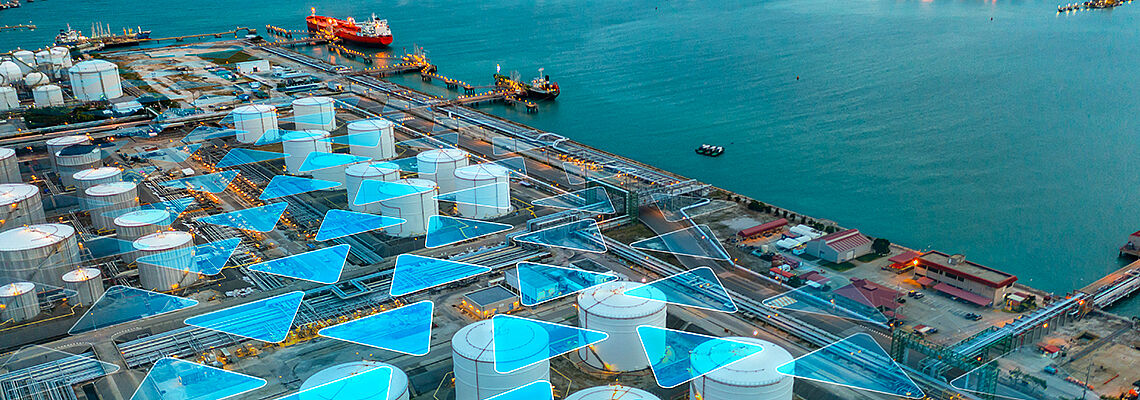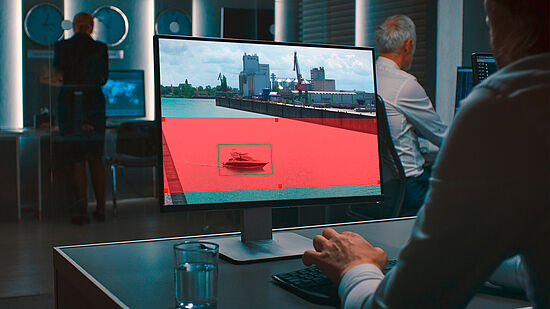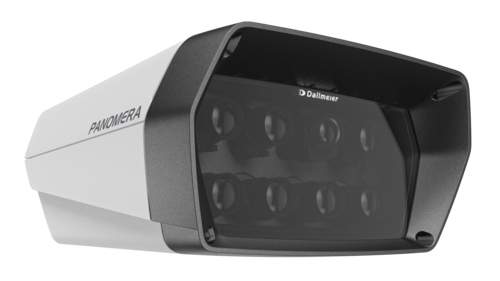Newsletter
Exclusive expert tips, customer stories and more.

As part of the critical infrastructure, ports and refineries have a particularly high protection requirement: As, for example, highly flammable and explosive petroleum products are handled and processed, unauthorised persons and vehicles must not be allowed access under any circumstances. In many cases, access from the water side must also be secured in accordance with the ISPS Code (International Ship and Port Facility Security). Intelligent video security solutions can assist in the visual surveillance of these sensitive areas.
The reasons for preventing unauthorised access to ports and refineries are many and varied, ranging from “simple” vandalism to general security and even terrorist attacks. Regardless of the specific reason, unauthorised persons and vehicles must not be allowed to enter the premises, either through gates and fences (on the land side) or through port locks or shore areas (on the water side). In practice, there is another challenge: port operators and refineries also want to prevent the entry of small watercraft. On the one hand, this is to prevent terrorism and, on the other hand, to avert danger, as there is a risk of sparking from outboard engines, e.g., from the ignition system, which could ignite gases and cause an explosion. It is particularly important for operators to comply with the security requirements of the ISPS Code and to maintain complete documentation of each entry of persons and vehicles.
Watercraft challenge: AI helps against light reflections
In the past, operators often used analogue surveillance cameras to secure factory gates and landside parts of a site. However, the ageing technology no longer provides the image quality required to clearly identify people and vehicles. Video content analysis (VCA) cameras are sometimes used to monitor ship locks to detect unauthorised vessels. However, these systems generate many false alarms due to wave action and water reflections. This places a huge burden on security officers to manually verify this high number of false alarms.
There is no standard solution
In video technology, the problem of high false alarm rates is typically associated with perimeter situations where people or vehicles are being detected. However, the challenge in ports and refineries is to detect objects automatically and reliably despite waves and water reflections. This requires large amounts of video to train neural networks on these waterborne vehicles.
For example, ports and refineries are now using video security solutions that monitor entire locks and automatically detect small watercraft with these specially trained neural networks. But since any video analytics is only as good as the data it has, AI video analytics is only as good as the images and video it receives from the cameras.

Is it possible? Vision, overview, and detail at the same time
Multifocal sensor cameras, which combine up to eight sensors with different focal lengths in a single optical unit and display the object space to be captured as a high-resolution overall image, have proved their worth in practice for the capture of large areas. This ensures high image quality over the entire area – the basic requirement for neural networks to deliver reliable results. Another advantage of this camera technology is that, depending on the application, it can replace up to 24 megapixel cameras, significantly reducing infrastructure costs for components such as masts, cables, and networks. Infrared cameras with AI are often used to assist in the monitoring of lock gates.
And video systems can also be useful on the rest of the site: 180-degree cameras are ideal for monitoring entrances, including site roads, and recording all people and vehicles attempting to enter the site. This is also known as Hostile Vehicle Mitigation (HVM) or defending against a terrorist attack using a vehicle. High-resolution cameras enable security personnel to easily identify vehicle number plates, for example, even from more than a hundred metres. Special 360-degree cameras on tanker bridges and piers provide a unique, rectified panoramic view of ships mooring, docking, or departing. When recording video, it is advisable to use recording equipment with redundant storage.

Quickly find what is important
The video management software (VMS) should be able to deliver results from the analysis data in the shortest possible time. Thanks to intelligent features such as convenient search, operators can quickly and easily evaluate the results of AI-based video analysis and distinguish important from unimportant processes. This also makes the rest of the video surveillance on the port or refinery site very easy.
Data protection is a top priority
A key demand of works councils is often that employees' privacy rights are always protected: One good practice is to ensure that security staff can only view the last 30 minutes of video recordings. Recording further back in time is only possible via a “four-eye login” involving a works council member. Other data protection functions, such as pixellating people in sensitive break areas, round off a sensible data protection concept in line with GDPR.
Measurable results
As a result, many ports and refineries are reporting that AI-based video analysis using specially trained neural networks is reducing false alarms to a minimum: Video systems detect unauthorised vessels with high accuracy, and the false alarm rate drops by more than 99 percent in some cases. As a result, operators can significantly increase the level of security on the port side, as well as on the land side or on the port or refinery site itself. But it can also be used to improve business processes. For example, a container terminal operator can optimise its workflow by receiving automatic notifications when vessels enter its port facility. Commercial port operators can also imagine a wide range of applications. The proximity of an installer and a maintenance contract also ensure that such video systems will continue to function smoothly in the future. More information on this topic can be found, for example, in Dallmeier's free practical guide “Video Technology and Security for Critical Infrastructures”. Interested readers can now download a copy (in German language) from www.dallmeier.com/en/critis-practical-guide
Do you have any questions? Or would you like to share your thoughts on this subject with us?
We welcome you to post your comments and remarks!